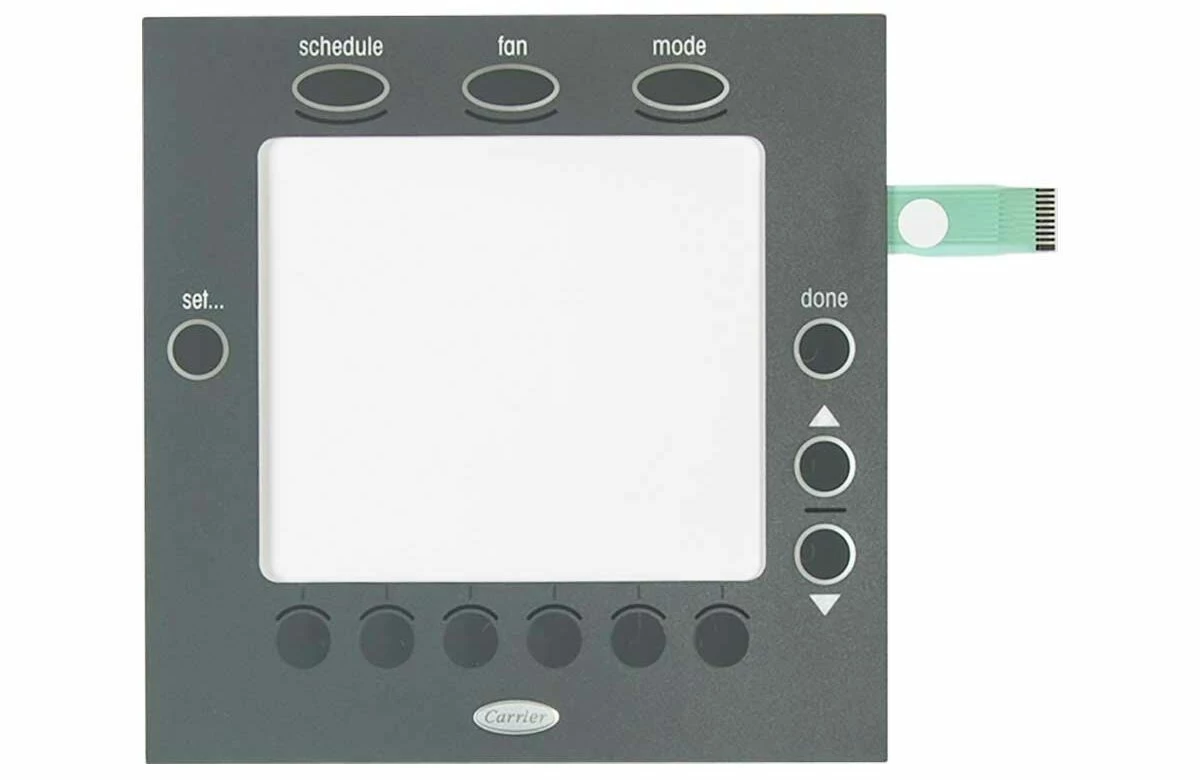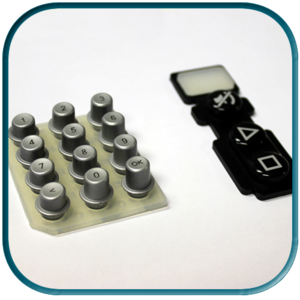Just How Membrane Switches Offer Smooth Operation in Severe Settings
Just How Membrane Switches Offer Smooth Operation in Severe Settings
Blog Article
The Ultimate Resource on Membrane Layer Switches Over: Style, Performance, and Applications
Membrane layer changes serve as an interesting intersection of layout and capability, playing an essential function in modern user interfaces throughout various industries. As we discover the diverse applications of membrane layer switches, it becomes evident that their adaptability and sturdiness are vital in atmospheres varying from medical care to customer electronics.

Comprehending Membrane Buttons
Membrane buttons are a type of interface innovation extensively utilized in different digital tools, defined by their slim, flexible style and performance. These buttons contain several layers that consist of graphic overlays, glue layers, and circuitry, allowing a effective and portable user interface for individuals. They can be found in home appliances, clinical tools, and industrial control panels, offering a dependable technique for individual interaction.
One of the key benefits of membrane buttons is their ability to resist pollutants such as dirt and moisture, making them appropriate for settings where resilience is necessary. Their low-profile style enables smooth assimilation into various applications, while the personalized visuals overlays enhance individual experience by giving clear visual feedback. Additionally, membrane switches can fit a selection of modern technologies, such as responsive feedback and backlighting, additional improving their functionality.
The production procedure for membrane layer changes usually includes display die-cutting, printing, and lamination methods, making sure accuracy and consistency in manufacturing. On the whole, membrane layer switches stand for a effective and versatile solution for modern-day electronic devices, incorporating performance with aesthetic allure in individual interface layout.
Key Elements and Style Elements
A selection of essential components and style elements collaborated to produce a reliable membrane button. At the core, the graphic overlay offers both aesthetic and useful functions, offering a straightforward interface while shielding interior parts from environmental variables. The option of products, usually polyester or polycarbonate, affects toughness and tactile comments.
Beneath the overlay, the sticky layer ensures the switch sticks securely to the substrate, which can be metal, glass, or plastic. The spacer layer is crucial, as it preserves the essential gap in between the overlay and the circuit layers, enabling effective actuation. Membrane Switches. Circuit traces, typically made from conductive ink or adhesive, are published on an adaptable substratum, making it possible for electric signals to be transmitted when stress is applied
Style factors to consider additionally include the plan of tactile domes or embossing that give physical responses to the user, improving the general experience. In addition, the format and spacing of the switches must be enhanced for ease of use, ensuring that users can navigate the interface without effort. Generally, these parts and layout components function synergistically to develop a reputable, useful membrane layer button customized to details applications.
Capability and Procedure Device
At the heart of reliable capability for membrane layer switches over exists their functional system, which assists in individual interaction with an easy yet effective design. These switches operate the concept of stress activation, where a customer uses force to a designated area of the button (Membrane Switches). This activity presses the layers of the button, completing an electrical circuit that sends out a signal to the linked tool
The building and construction typically consists of a leading visuals layer, a sticky spacer layer, and a lower circuit layer, which collectively develop a robust interface. When pressure is used, the leading layer falls down against the lower circuit layer, permitting conductive traces to attach. This style not only enables clear responsive comments but additionally guarantees toughness and integrity, as the switches are frequently immune to dust and moisture.
In addition, the adaptability of membrane switches over enables for integration with numerous innovations, consisting of LED signs and microcontrollers, enhancing their performance. By offering a structured interface that decreases mechanical wear, membrane switches over stay a favored option in applications ranging from customer electronics Look At This to commercial equipment, making certain optimal efficiency and user complete satisfaction throughout diverse atmospheres.
Kinds Of Membrane Layer Buttons

An additional substantial category is illuminated membrane switches, which incorporate backlighting to enhance exposure in low-light problems. These buttons are often used in control panels and control panels where clear presence is essential.
Additionally, there are custom-made membrane switches developed to satisfy certain dimensional, visual, and practical requirements. These personalizations can consist of unique shapes, shades, and formats, permitting seamless assimilation into different gadgets.

Applications Across Various Industries
Exactly how do membrane layer buttons improve functionality throughout diverse sectors? In the medical sector, membrane layer switches play an important role in devices such as analysis devices and patient monitoring systems, where integrity and simplicity of cleaning are critical.
In the automotive market, membrane layer switches are frequently used in control panels and control panels, supplying instinctive controls that improve chauffeur safety and security and benefit. The customer electronics field likewise profits from their lightweight and adjustable attributes, making it possible for streamlined styles for mobile phones and home appliances.
Additionally, membrane layer buttons find applications in commercial automation, where they add to efficient machinery procedure and monitoring systems. Their resistance to dirt and dampness ensures functionality sought after problems (Membrane Switches). Furthermore, the food and beverage market utilizes membrane layer switches for tools control, where health and toughness are essential
Conclusion
In verdict, membrane changes represent a vital advancement in individual interface technology, defined by their distinct layout and capability. The adaptability of membrane switches over facilitates their application across varied read what he said industries, from clinical gadgets to consumer electronics.
Membrane switches offer as an appealing crossway of layout and performance, playing a critical duty in contemporary user interfaces across numerous industries.Membrane layer switches are a kind of individual interface modern technology commonly used in different electronic gadgets, characterized by their slim, flexible style and functionality.At the look at these guys heart of reliable functionality for membrane layer switches exists their operational device, which helps with customer interaction with a simple yet reliable design. These buttons operate on the concept of pressure activation, where a customer applies pressure to an assigned area of the button.In final thought, membrane switches over represent a critical development in individual interface modern technology, defined by their one-of-a-kind design and performance.
Report this page